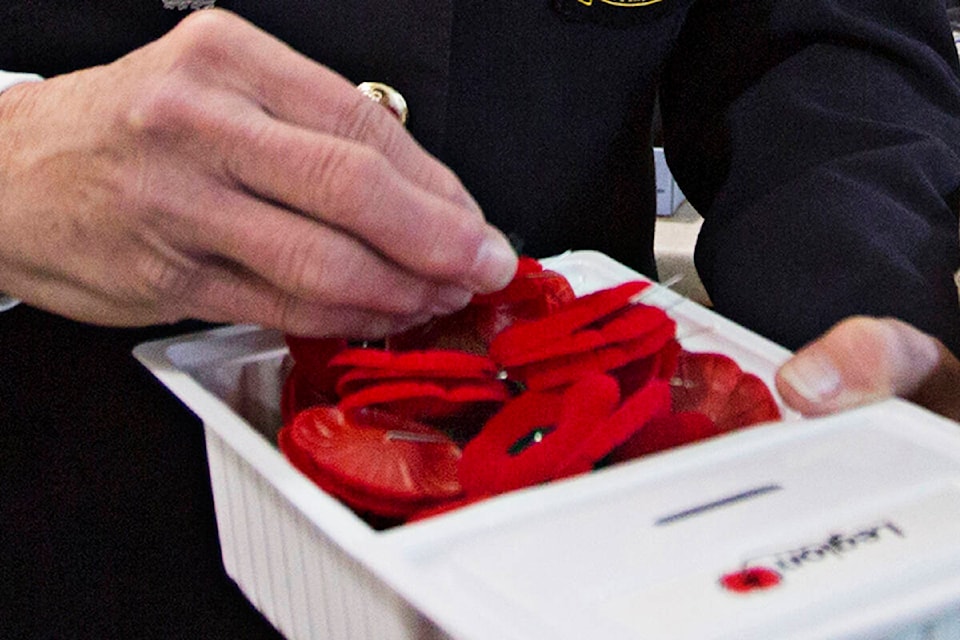Technology is helping keep the memory of those who gave their lives in wartime alive in the hearts of Canadians.
Poppy Stories is one of several new initiatives introduced by the Royal Canadian Legion.
Each lapel poppy given out this November is designed to be scanned with a smartphone taking the person to a short biography of the lives of those who have fallen in war. A name and photo comes up with the biography listed underneath. In addition to a background of the individual’s life, there is an account of their wartime service and how they fell in battle.
The following is a synopsis of one of those stories.
“Edwin Victor Cook was born May 10, 1897, and grew up in Alert Bay, B.C. Although he attended residential school he was able to stay connected with his Nagmis roots and traditions through cultural teachings from his parents and grandparents. He enlisted in the army in 1916, serving in the First World War. Wounded on several occasions he returned to combat each time. He died a few days after being seriously wounded in the Battle of Vimy Ridge. Private Cook was just 21 years old.”
To read more about Cook and others who fell in battle visit PoppyStories.ca on your smartphone and follow the directions to scan your poppy.
One of the ways Royal Canadian Legion Branch 260 is promoting awareness is through the Remembrance Day poster contest in the schools for children, said president Joni Guenther.
Poppy Chair Elsie Urquhart also sets up appointments for veterans to go to the schools and talk about their experiences in service, she said.
According to the Royal Canadian Legion website, the Remembrance Poppy came about due to the efforts of Madame Anne Guerin of France following World War I. After being inspired by John McCrae’s poem ‘In Flanders Fields’ Guerin founded a charity to assist in rebuilding regions of France.
She created poppies made of fabric as a fundraiser, later bringing the concept to France and her allies including the precursor to the Royal Canadian Legion, The Great War Veterans Association. The symbol of the poppy was adopted by the organization in Ontario on July 6, 1921.
Since that time the poppy has remained a symbol of remembrance but plays an ongoing role in the support of veterans and their families.
At the local level, Guenther said their poppy fund is used to distribute bursaries, enhance veterans’ lives in the area and goes towards the Remembrance Day services.
New in 2022 are biodegradable poppies and wreaths. Announced in a news release Oct. 28, the purpose is to reduce the Royal Canadian Legion’s environmental footprint using paper, cotton velvet, plaster, moss and bamboo. There is currently a stockpile of the current poppy to go through but in a few years all poppies and wreaths will be biodegradable.
“There was a very good response this year for the poppy drive,” said Guenther. “People are more enthusiastic, more involved.”
She said she was not sure if it was simply due to people being able to be out and about again or if it signalled a growing awareness of the importance of Remembrance Day. She hopes it is the latter.
fiona.grisswell@100milefreepress.net
Like us on Facebook and follow us on Twitter
